Mirzak: Difference between revisions
mNo edit summary Tag: 2017 source edit |
mNo edit summary Tag: 2017 source edit |
||
| Line 92: | Line 92: | ||
===Zaibac district=== | ===Zaibac district=== | ||
[[File:Zaibac district.jpg|thumb|Refinery city Zaibac]] | [[File:Zaibac district.jpg|thumb|Refinery city Zaibac]] | ||
'''Zaibac''' or '''Zaibac Refinery City''' is one of Mirzak's sprawling industrial districts located east of the city center. Zaibac is adjacent to the vast housing tenements of Zongse district where most of its workforce lives. | '''Zaibac''' or '''Zaibac Refinery City''' is one of Mirzak's sprawling industrial districts located east of the city center. Zaibac is adjacent to the vast housing tenements of Zongse district where most of its workforce lives. Zaibac houses a variety of facilities including oil refineries that pump out gasoline and diesel oil, natural gas processing plants, Iron refinery complexes to treat pig iron and metal refineries for copper, zinc, nickel and tungsten. The densely packed industrial operations release enormous amounts of pollutants into the air; Zaibac is the most polluted district of the capital and face masks ordinances are permanently in place. Many of the industrial operations in Zaibac are geared directly to feeding energy to the city's electricity grid, making the district the beating heart of Mirzak. | ||
===Government Quarter=== | ===Government Quarter=== | ||
[[File:CCTV.jpg|thumb|Ministry of Information inside the Government Quarter]] | [[File:CCTV.jpg|thumb|Ministry of Information inside the Government Quarter]] | ||
The '''Government Quarter''' also called the '''Central Fortress''' and the '''Grey Zone''' is the heavily fortified district housing all of the central installations of the [[Daxia]]n government, it is also the seat of power of the [[Party of Daxian Democrats]]. It covers an area of 50 square kilometers, it is ringed by 8-meter high walls of reinforced, blast proof concrete, watchtowers, barbed wire, sensors, cameras and drone surveillance and remote controlled machine gun nests. Entry points are few and are all guarded by members of the [[Bureau of State Protection]], these forces also have access to anti-air batteries and anti-tank weaponry. | The '''Government Quarter''' also called the '''Central Fortress''' and the '''Grey Zone''' is the heavily fortified district housing all of the central installations of the [[Daxia]]n government, it is also the seat of power of the [[Party of Daxian Democrats]]. It covers an area of 50 square kilometers, it is ringed by 8-meter high walls of reinforced, blast proof concrete, watchtowers, barbed wire, sensors, cameras and drone surveillance and remote controlled machine gun nests. Entry points are few and are all guarded by members of the [[Bureau of State Protection]], these forces also have access to anti-air batteries and anti-tank weaponry. There are vast underground tunnel complexes with reinforced bunkers, warrens and redoubts that may extend as much as one kilometer underground | ||
=Demographics= | =Demographics= | ||
Revision as of 23:16, 13 December 2023
Mirzak | |
|---|---|
 Mirzak's industrial district | |
| Country | Daxia |
| Foundation | 432 BC |
| Government | |
| • Type | Special City |
| • Prefect | Hao Fard (PCD) |
| Area | |
| • Total | 21,900 km2 (8,450 sq mi) |
| • Land | 21,900 km2 (8,450 sq mi) |
| • Water | 4,000 km2 (1,500 sq mi) |
| Population (2025) | |
| • Total | 25,674,000 |
| • Density | 1,200/km2 (3,000/sq mi) |
Mirzak is the capital and largest city of the Democratic Republic of Daxia. With a total population within its metropolitan area standing at over twenty five million people, it is the largest urban agglomeration in Audonia and one of the largest in the world. Founded beside the Nianyu river, the city's sprawl has extended itself over both banks with numerous bridges across built over the years. The Mirzak Metropolitan Area is a special zone that is governed separately from Central Province. The specially appointed position of Prefect of Mirzak has vast administrative powers and resources at its disposal, making whoever holds the position one of the most powerful political figures in Daxia. The current prefect is Hao Fard, a Party stalwart who rose through the security organs and was appointed to run the city in 2025. Mirzak is home to the Chancellor's residence, the federal ministries, the People's Assembly, the Chamber of Productive Sectors and other legislative and administrative bodies. The capital is by far the wealthiest and most economically vibrant city in Daxia, the unrivaled economic engine of the country. Demographically it is home to various minority groups from all of Audonia and further abroad.
The city has existed under various names since at least 2100 BC, the oldest records available give it the name Laozun which means 'the old village'. The Yang dynasty renamed it to Zhongguang or the central expanse when it designated it as its new capital and from that point on the city became the seat of power of all Daxian dynasties that followed Yang. The fall of the Qian dynasty to the coup orchestrated by Dai Hanjian and Qiu Heng ocurred almost exclusively in the capital. The city was renamed once again during the presidency of Qiu Heng who thought Zhongguang was a name too reminiscent of the imperial era. The name of Mirzak was created by a supercomputer programmed by the National Institute of Robotics, the computer produced a line of binary code that translated to "Mirzak, ruler of cities". The supercomputer appeared to be attempting to communicate that Mirzak was its own name and that it intended to assume the governance of the capital and other cities. The supercomputer was shut down before it could enact any nefarious plans. When Qiu Heng was informed of the incident he thought it was auspicious and decided to rename the capital to Mirzak.
History
Foundation
Imperial Era
Republican Era
Administration
Districts
Shangri-La district
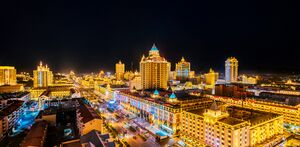
Shangri-La is a casino district located on the western outskirts of the capital. Originally a neighborhood for low class laborers the 2010's casino boom has radically transformed Shangri-La. Around one hundred large casinos and thousands of Abachinko parlors and gambling dens are currently in operation, employing over a third of Shangri-La's three million inhabitants; the hospitality sector is commensurately outsized to accommodate for all of the tourists visiting Shangri-La to gamble. The illumination from the casino lights is so strong that visitors to the district have sometimes reported temporary blindness and damaged retinas, something that has been collectively dubbed as the Manzhouli effect, after the main street of Shangri-La. Crime is a pressing concern in the district, the casinos and associated entertainment venues being a hive of scum and villainy where everything goes; from human trafficking and drug smuggling to racketeering, kidnappings and murder for hire. Shangri-La has gone through fourteen police chiefs in the last five years; a special Casino Police was created in 2022 to be a proximity force to keep an eye on gamblers. A large proportion of the city's Zorfashazim Jews live in the district, many of them operate gambling rooms; the Jewish Mob is also based in Manzhouli street. The Agudat Kol Shofar synagogue serves the religious needs of the community.
Kuaijing district
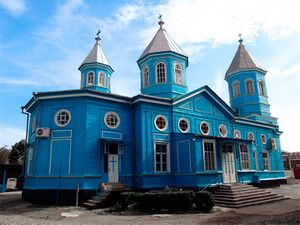
Kuaijing district also known as the Kiravix Quarter is located in the far northwest of the city. It is a medium to low income area with a significant Coscivian presence that according to the last census, hovers around 675,000 people. The origins of the Coscivian presence in Mirzak are poorly documented, it is believed the originators of the community were people kidnapped from Kiravian colonies like Sarolasta and Seváronsa during the Daxian Polynesian Wars. Imperial Qian authorities may originally have simply intended to use the abductees in land reclamation projects north of the capital but eventually simply abandoned them to their fate. Over time a slum grew organically that would form the nucleus of the modern district. Local Daxians called it Kuaijing for the Coscivians propensity to plant potatos (errūēln) and purple yam in every available area with any soil. Many local dishes are made with fermented potatos and pond fish; another famous dish among the district's poor is called Dośpax which is fried chicken scraps and bones usually scavenged from restaurant garbage bins. Most Coscivians in the district are adherents of the Coscivian Orthodox Church, being forced to practice it in secret until the relaxation of religious persecution in 2011 with the Law of Religious Bodies. Religious life is centered on the Coscivian Orthodox Church of Saint Ragmunihaśix, a small and rotting wooden building near the center of the district. Repeated requests to be allowed to renovate the church have been made to Directorate of Religious Affairs, all of which are invariably turned down.
Zongse district
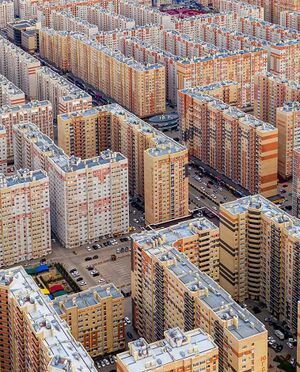
Zongse district also known in the past as the Swarthy Quarter for the presence of numerous Caphirians and Pelaxians during the height of commercial exchanges between the Qian dynasty and Sarpedon is a habitation district in the east of the capital near the industrial zones. Zongse was built during the late 1600's, originally consisting only of a set of large wooden barracks to house foreign traders, the district grew as more structures of distinct Sarpedonian architecture and flavor sprouted. Local Caphirians were even granted permission to dedicate a stele in the Zongse central market to Imperator Perfidax who granted them monetary subsidies; the stele is now considered definitely lost. At its height almost a third of the district's population were foreigners until the Pogrom of the Caphirians in 1758 were most of them were killed and the majority of the wooden structures burned down by the rampaging mobs.
Today most of the old historic buildings have been completely razed, replaced by hundreds of space effective vertical habitats that serve to house hundreds of thousands of workers who commute to the neighboring Zaibac Refinery City. Zongse is almost exclusively a housing district with the monotone white and brown apartment buildings only broken up by the occasional park or playground and a multitude of above ground and underground parking lots. Zongse has one of the highest rates of suicide among all Mirzak's districts.
Alcoholism especially overconsumption of Slozo is rampant, to the point that city authorities periodically declare Zongse a dry district; all alcohol shipments are then forced to traverse alternate routes through the city to avoid Zongse. Due to its vast reserves of impoverished and malnourished blue collar workers, Zongse is also used as a testing laboratory by food giant Agario for its new product lines, for example the concept of the Factory Gruel was perfected during a series of tests carried out with Zongse residents who proved receptive to the mysterious grey curds.
Zaibac district
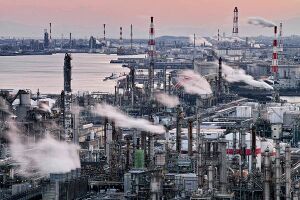
Zaibac or Zaibac Refinery City is one of Mirzak's sprawling industrial districts located east of the city center. Zaibac is adjacent to the vast housing tenements of Zongse district where most of its workforce lives. Zaibac houses a variety of facilities including oil refineries that pump out gasoline and diesel oil, natural gas processing plants, Iron refinery complexes to treat pig iron and metal refineries for copper, zinc, nickel and tungsten. The densely packed industrial operations release enormous amounts of pollutants into the air; Zaibac is the most polluted district of the capital and face masks ordinances are permanently in place. Many of the industrial operations in Zaibac are geared directly to feeding energy to the city's electricity grid, making the district the beating heart of Mirzak.
Government Quarter
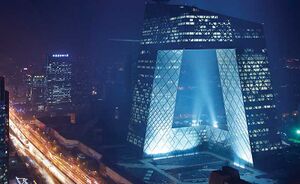
The Government Quarter also called the Central Fortress and the Grey Zone is the heavily fortified district housing all of the central installations of the Daxian government, it is also the seat of power of the Party of Daxian Democrats. It covers an area of 50 square kilometers, it is ringed by 8-meter high walls of reinforced, blast proof concrete, watchtowers, barbed wire, sensors, cameras and drone surveillance and remote controlled machine gun nests. Entry points are few and are all guarded by members of the Bureau of State Protection, these forces also have access to anti-air batteries and anti-tank weaponry. There are vast underground tunnel complexes with reinforced bunkers, warrens and redoubts that may extend as much as one kilometer underground
Demographics
Education
Crime
Economy
Infrastructure
Transportation
Mirzak Automated Monorail System
Other
Mirzak Cheese Vaults
Culture
Cuisine

Blue milk
Tourism
Landmarks
city idea repository
biggest black pop in alshar, blacks from audonia brought to work in pharaonic construction projects. live in massive shanty towns/hive cities/ugly blocky cramped skyscrapers like that dusty cake slice building in hong kong
